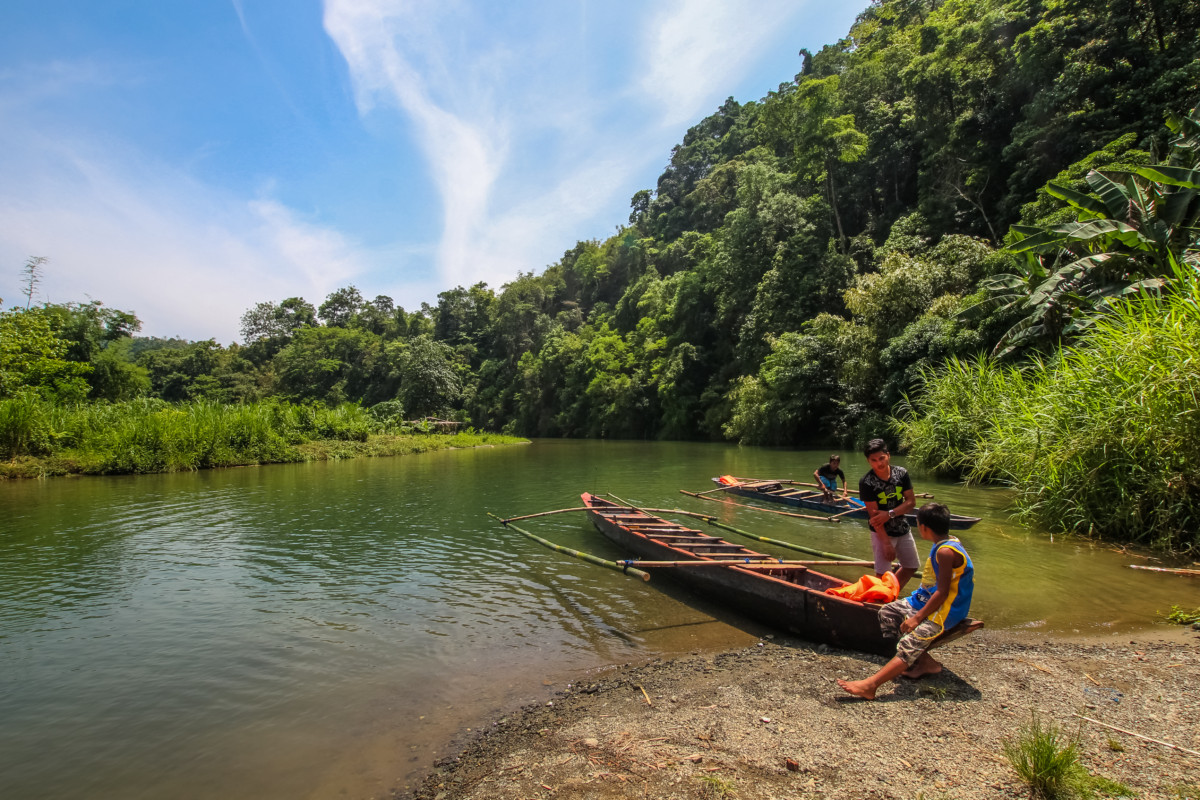Protection and safeguarding of free-flowing rivers needed as global study finds threats to freshwater ecosystems
September 20, 2021

Local community boatmen in the Ipo Watershed prepare their boat before setting off down the river. Many have benefitted from the Ipo Watershed, and good science ensures that this continues for years to come. © Alo Lantin / WWF-Philippines
WWF-Philippines is calling for the increased protection of river ecosystems in the country following a new global study that found that over 260,000 kilometers of free-flowing rivers are at risk of being disrupted; equivalent to going around the Earth’s equator 6.5 times.
“Rivers have a very special place in Philippine history and culture. Early settlers travelling by sea founded the city of Manila on the delta of the Pasig River. The Philippines was also once called the ‘Republika ng Katagalugan’ which is based on the term ‘taga-ilog’ or ‘from the river’,” Paolo Pagaduan, WWF-Philippines’ Forests for Water Program Manager said.
“Most Filipinos probably only see the surface value of rivers. But if you look deeper, you will see an endless flow of benefits for us and nature,” Pagaduan said following the publication of the study in the Global Sustainability journal.
Practically every land in the Philippines is part of a watershed and 142 have been declared as critical watersheds by DENR. According to Pagaduan, some rivers in these watersheds no longer flow freely due to human activity. The study led by Michele Thieme, WWF-US Deputy Director Freshwater, cites dams and reservoirs as the leading causes of disruptions in rivers around the world – and the subsequent loss of the diverse range of benefits that healthy rivers provide for the surrounding environment and communities.
“When viewed from high above, rivers look like blood vessels in our body. That’s what they are for the planet. They distribute nutrients and resources across large areas allowing plants, animals, and humans to flourish,” he said. “Like rivers, we don’t want our blood vessels to be blocked”.
According to the study, connected and healthy rivers deliver diverse benefits that are often overlooked: freshwater fish stocks that enhance food security for hundreds of millions of people, delivery of sediments that nourish agriculture and keep deltas above rising seas, and floodplains that help mitigate the impact of floods and support a wealth of biodiversity.
“Rivers are powerful agents for keeping nature and communities healthy and resilient, especially in a warming world, yet their ability to support life is threatened by hydropower dams in many parts of the world. The best policy solutions will be those that balance renewable energy needs with the many benefits of thriving freshwater ecosystems,” Thieme said.
The researchers compiled science-based policy solutions to meet climate targets and energy goals, while also safeguarding free-flowing rivers and their benefits to people and nature. The study outlines specific examples where governments have successfully implemented these strategies, including:
- Avoiding fragmenting rivers by instating formal protections of rivers or by exploring alternative development options, such as non-hydropower renewable energy, like solar and wind. Early, system-wide planning is the best solution to meet development needs and keeps rivers and the benefits that they provide connected and flowing.
- Minimizing the impacts of dams on rivers by siting dams in locations with fewer impacts on people and nature. Technologies such as environmental flows can also help minimize dam impacts by allowing water to move through dams in a manner that mimics natural flows.
- Restoring rivers through dam removal, an increasingly popular option in the US and Europe due to the high costs of dam maintenance and its proven ability to bring life back to rivers and help restore them to health.
- Offsetting the negative impacts of dams. If one river is severed by a dam, there may be options to protect another river to ensure that similar values are maintained in the region.
"Nature is not just the land and the sea. Often neglected in the conversation are rivers that play vital roles in sustaining life. Let us ensure that we have free-flowing rivers on the agenda," Pagaduan said.
Notes:
Rivers and freshwater species are in peril. Recent studies show that 2/3rds of the world’s longest free-flowing rivers are impeded by dams or man-made infrastructure. There are roughly 60,000 large dams around the world, with over 3,700 more hydropower dams proposed or under construction. Populations of freshwater species have declined by 84% on average since 1970, with degradation of rivers a leading cause of this decline. Nearly 1/3 of freshwater fish face extinction.
Find out more about how we’re tackling the climate crisis and protecting nature with the right renewables in the right places through our microsite A Brighter Future.
For more information, please contact:
Paolo Pagaduan
Forests for Water Program Manager
ppagaduan@wwf.org.ph
For media arrangements, please contact:
Ms. Chezka Guevarra
Public Relations, Media, and Events Assistant Manager
09276566436
cguevarra@wwf.org.ph
